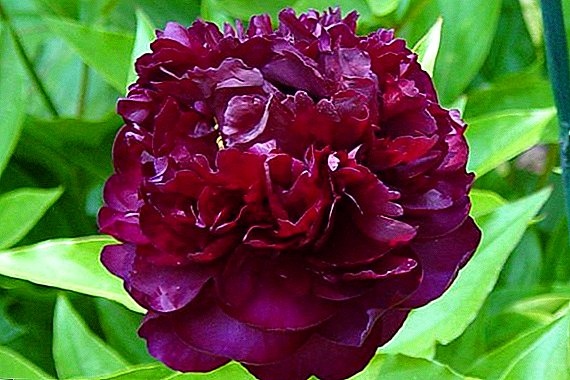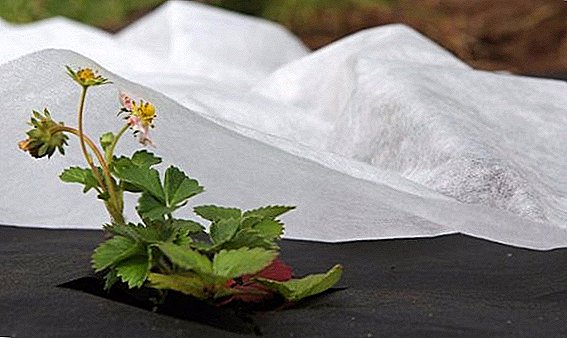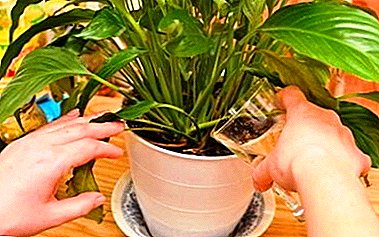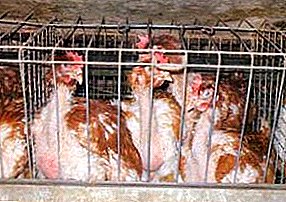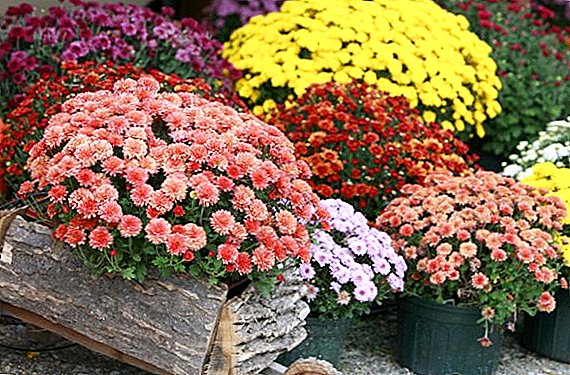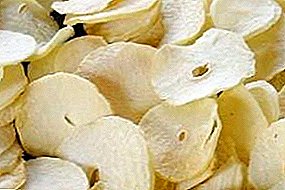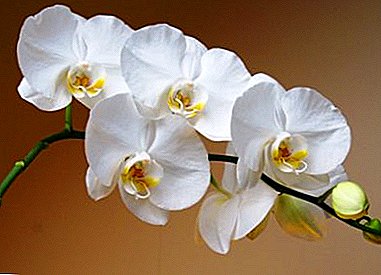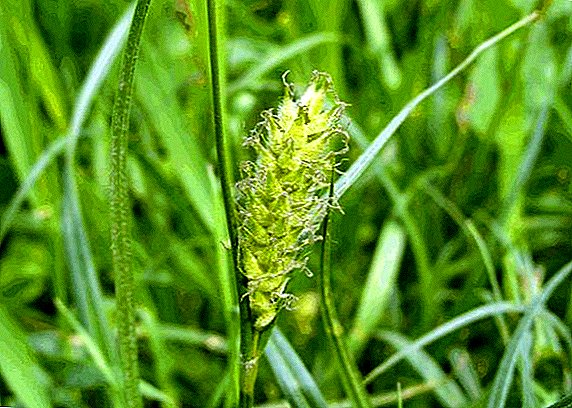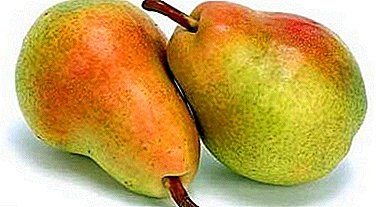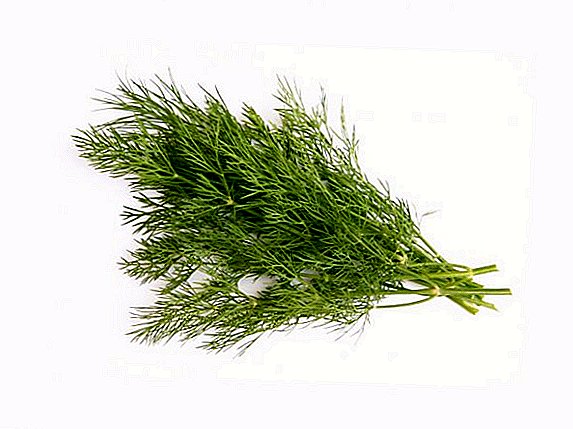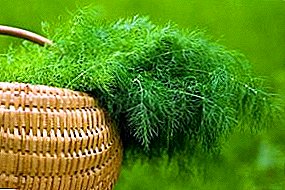 Dill - annual plant up to 125 cm tall, stem is hollow, thin leaves with multiple leaves, flowers of yellow color form a complex umbrella, blooming, form oval brown fruits - seeds. Dill is a fairly unpretentious plant, but it is often affected by various diseases that prevent the gardener from getting a good crop of fragrant greens. About what diseases of dill are common and how to deal with them, this article will tell.
Dill - annual plant up to 125 cm tall, stem is hollow, thin leaves with multiple leaves, flowers of yellow color form a complex umbrella, blooming, form oval brown fruits - seeds. Dill is a fairly unpretentious plant, but it is often affected by various diseases that prevent the gardener from getting a good crop of fragrant greens. About what diseases of dill are common and how to deal with them, this article will tell.
How to remove powdery mildew from dill
Mealy dew is a disease whose pathogen Erysiphe umbelliferarum is a mildew of fungi, manifested by the presence of white bloom, similar to webs, and subsequently the plant becomes as if sprinkled with flour. The optimum conditions for the development of powdery mildew are the temperature + 18 ... +20 ° C, and the humidity is about 70-80%. In the fennel greens affected by this disease, the aroma and taste deteriorate. 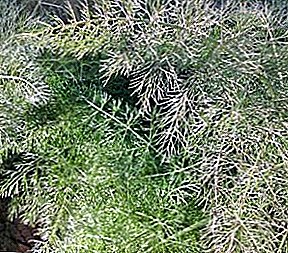
Single leaf lesions are removed from the plant. Powdery mildew is removed from dill by spraying with chlorine dioxide, a weak solution of manganese or a mixture of antibiotics - Terramycin, Penicillin and Streptomycin in equal proportions.
Important! By avoiding excessive wetting of the land in dill beds, many diseases of spicy greens can be avoided.
As a preventive measure for the infection of this disease, dill can be pollinated with sulfur. Also in the fall, it is necessary to remove plant residues from the seed beds, since spores of this fungus can spend the winter there.
How to deal with downy mildew
Downy mildew (peronospora) is a disease similar to external signs with powdery mildew. If there is a question why the dill turns yellow on the beds, you need to look at the plant, it is possible that he was struck by peronosporosis. After a while the yellowed leaves become brown in color, the underside of the leaf is covered with a dense white layer of mushroom mycelium. The leaves and shoots gradually dry and wither, the plant growth slows down.
You can get rid of downy mildew spraying the plants with a solution of colloidal sulfur (1%), as well as a composition of 25 g of soda ash, 20 g of soap and 5 liters of water. For the prevention of this disease, apply plant treatment Bordeaux mixture, at least two or three times.
Signs of fomoz dill and their treatment
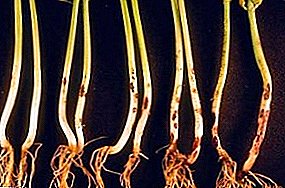 Phomosis causes the fungus Phoma anethi Sacc, which affects all the ground parts of dill, the roots are less likely to suffer. It shows fomoz dark areas with clear black dots. Spores of the fungus spread well through the air with the help of insects, and are also able to persist in the soil, weeds and fallen plant residues. Strongly affected shoots of dill cut and removed from the site. You can get rid of fomosis by spraying the plant with Bordeaux liquid in several stages twice a month. Processing should be carried out not less than 14 days before cutting green and eating it in food. All plant residues are recommended to be destroyed in the fall.
Phomosis causes the fungus Phoma anethi Sacc, which affects all the ground parts of dill, the roots are less likely to suffer. It shows fomoz dark areas with clear black dots. Spores of the fungus spread well through the air with the help of insects, and are also able to persist in the soil, weeds and fallen plant residues. Strongly affected shoots of dill cut and removed from the site. You can get rid of fomosis by spraying the plant with Bordeaux liquid in several stages twice a month. Processing should be carried out not less than 14 days before cutting green and eating it in food. All plant residues are recommended to be destroyed in the fall.
Did you know? Dill are planted in well-ventilated areas with sufficient lighting.
Dill leaves
Cercospora causes the fungus Cercospora anethi, with the defeat of which the stems and leaves of dill cover brown or dark-colored spots of elongated shape. Later, when the spores of the fungus ripen, the affected plant is covered with a bloom of light color. It is possible to get rid of the fescue of dill leaves by spraying with copper oxychloride - 20 g per 5 l of water or with a 1% solution of Bordeaux mixture.
Fusarium wilt treatment methods
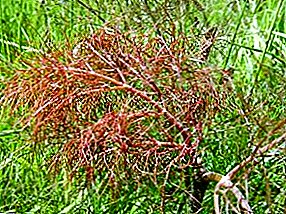 Fusarium wilt is caused by Fusarium fungi. Fusarial wilt is caused by excessive watering, overheating of the soil, or damage to the plant's root system; infected seeds may also be the source of the disease. The disease first infects the lower leaves, then the upper ones. At the same time, the leaves and vessels of the stem turn red and yellow, and the dill itself subsequently fades. If only recently, healthy dill turns yellow, then the question is what to do, one answer is to urgently spray it with “Fundazol” or “Topsin”, since the initial stage of the disease is rather successfully treated. Strongly affected plant to be destroyed.
Fusarium wilt is caused by Fusarium fungi. Fusarial wilt is caused by excessive watering, overheating of the soil, or damage to the plant's root system; infected seeds may also be the source of the disease. The disease first infects the lower leaves, then the upper ones. At the same time, the leaves and vessels of the stem turn red and yellow, and the dill itself subsequently fades. If only recently, healthy dill turns yellow, then the question is what to do, one answer is to urgently spray it with “Fundazol” or “Topsin”, since the initial stage of the disease is rather successfully treated. Strongly affected plant to be destroyed.
Important! Thickened plantings weaken dill and contribute to the development of infections.
Causes and treatment of verticillary wilting
Verticillary wilt causes the soil fungus Verticillium arbo-atrum. Verticillosis is a serious disease, the best temperature for its development is + 17 ... +22 ° C. Infection occurs through the roots of a plant or its damage by pests. The cause of the disease can also be soil with spores of fungus, compost or manure.
After the fungus enters the dill, its mycelium fills the vessels of the plant, along which the juice and nutrients move to the leaves, blocks this stream, after which the dill fades and dies. Treatment of verticillary wilting consists in spraying the plant with “Fundazole” or “Topsin”. Strongly affected dill bushes destroy. As a prevention, you can use "Previkur."
What to do with rust on dill
 Dill in the first months of summer is prone to rust, which appears on the leaves and shoots in the form of brownish yellow spots. Get rid of rust by regularly treating the plant with Bordeaux mixture 3 times per month. As a preventive measure, before planting, the seeds of dill can be soaked for a short time in hot water, cooled in cold water, and then dried. This manipulation will reduce the likelihood of contamination of dill plantations with rust.
Dill in the first months of summer is prone to rust, which appears on the leaves and shoots in the form of brownish yellow spots. Get rid of rust by regularly treating the plant with Bordeaux mixture 3 times per month. As a preventive measure, before planting, the seeds of dill can be soaked for a short time in hot water, cooled in cold water, and then dried. This manipulation will reduce the likelihood of contamination of dill plantations with rust.
Did you know? An infusion of 20 g of dill seed, brewed with a glass of boiling water, drunk at night, will relieve insomnia.
Black dill leg: what to do?
The black leg is manifested in the darkening of the root collar, which weakens, becomes thinner and softer, and soon begins to rot. The infected plant dries out and perishes. Infected seeds, wet soil, large variations in ambient temperature and lack of light can cause blackleg. Black leg - a common disease of dill when grown, the plant can be cured by spraying the drug "Fundazol".


